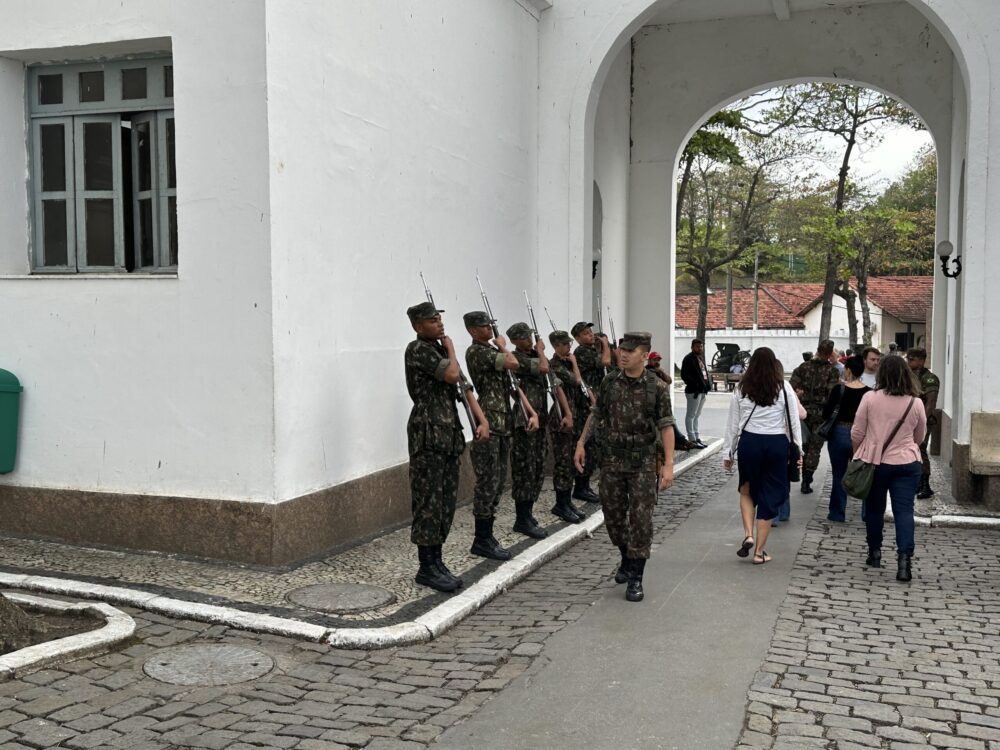Folks,
Last week, I visited a Frida Kalho exhibit in a museum located inside the historic Fort Copacabana, a symbolic military installation that was once a coastal defense but now merely functions as a museum with various exhibits.
While attempting to enter the Kalho exhibit with the Brazilian journalist Nathalya Araujo, I was quickly surrounded by 5-6 Brazilian Army soldiers and briefly detained by them. The soldiers demanded that I remove my red hat from the Brazilian landless workers movement, the same hat that I had worn to the White House when Lula visited President Biden last February.
The Brazilian Landless Workers Movement (MST) has long been hated by the Brazilian military and the financial elite of Brazil.
Using agrarian reform provisions of the 1988 Brazilian constitution that “property should serve its social function”, the MST has engaged in long legal and political battles to win the right to occupy farms. Despite often facing deadly violence from landowners, the MST has won farmland for more than 400,000 families on over 7.5 million acres.
Now, the MST is the largest producer of organic rice in all of Latin America. Unlike other companies, the Landless Workers Movement is also a political party with over 1.5 million dues-paying members throughout Brazil.
Their organizational strength and creative ideas about solidarity economics have propelled them to become a driving force in Brazilian politics.
Wearing the red hats of the MST has become a trendy statement by leftists to show their support for the movement. If you flip through dating apps in Brazil, you can see scores of young people wearing MST hats in dating apps wearing them to signal to potential mates that they are “down with the cause”.
The popularity of MST hats, which grew exponentially during the defeat of Bolsonaro last fall, has led to some people being attacked in the street for wearing them. And more petty acts of intimidation
While my detention was very brief, the show of force by a half-dozen Brazilian soldiers asking me to remove my hat is representative of the pervasive climate of intimidation that many on the left are subjected to in Brazil.
The move also illustrates the threats and intimidation I could face while we are down in Brazil, covering the landless workers movement.
Next week, I’m going into rural Brazil to cover the Landless Workers’ Movements. While I speak fluent Portuguese, I have decided for safety reasons to hire a veteran Brazilian journalist Fernando Cavalcanti, who has worked for Folha de São Paulo, BBC, and CNN.
Fernando is also going to film as we drive around and visit three different settlements of the Landless Workers Movement. We plan to release a short 9-10 minute documentary explaining to our subscribers what is happening.
Brazilian solidarity economics have the potential to inspire workers in the US. However, almost no publications on the left have reporters who speak Portuguese fluently. Fortunately, I learned Portuguese when I studied at PUC-RIO in the early 2000s.
So for the next two weeks, I will be out in the field, and we need help covering this story.
Donate to help us hire a Brazilian journalist to help us cover the Landless Workers Movement


